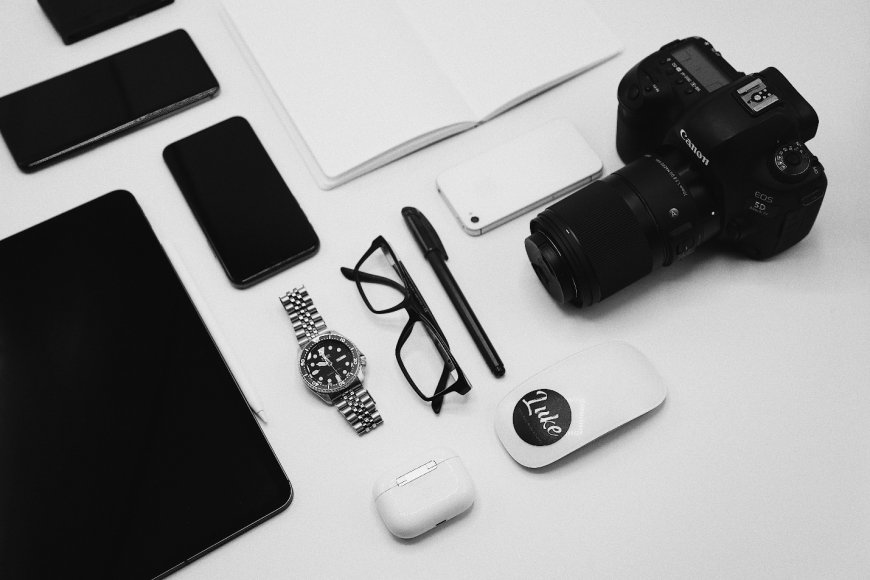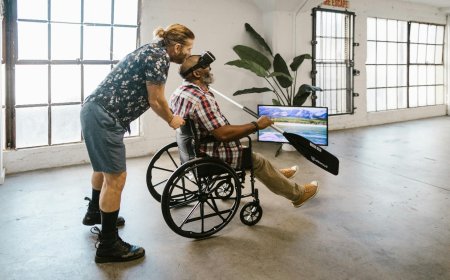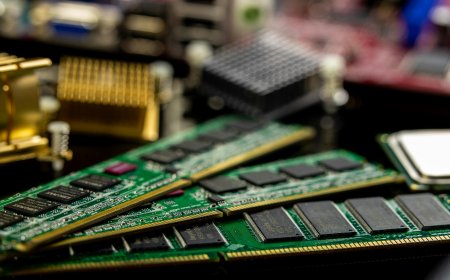A Revolution in Healthcare with Wearable Devices

Wearable technology has become a developing tool in healthcare in recent years providing hitherto unheard-of chances for early disease diagnosis and prevention. From biosensors to smartwatches, these tools are changing how people and doctors track, diagnose, and treat medical conditions. Wearables give real-time insights that can detect possible health problems before symptoms show by constantly monitoring vital signs and other health indicators, therefore enabling quick action and enhancing results.
The Evolution of Wearable Technology in Healthcare
Over the past ten years, wearable technology has developed quite drastically. Originally intended for tracking exercise, smartwatches and fitness bands have developed their capacity to include advanced health monitoring tools. Wearables may today track heart rate, blood pressure, oxygen saturation, respiration rate, sleep patterns, and even electrocardiograms (ECGs). These developments have made wearable devices indispensable instruments for preventative medicine.
The early disease detection capability of wearable technology is among its most important innovations. Wearable ECG monitors, for instance, can spot irregular heart rhythms that might point to illnesses such as atrial fibrillation or other cardiovascular problems. In the same vein, continuous glucose monitors (CGMs) enable diabetics to watch blood sugar levels in real time, hence lowering their risk of problems.
How Wearables Enable Early Disease Detection
Wearables combine advanced sensors with data analytics to detect early disease. These devices gather continuous streams of physiological data, which are subsequently machine learning algorithmically analyzed to find abnormalities in normal health patterns. For example:
1. Cardiovascular Health: Devices with ECG and blood pressure monitoring can identify abnormal heart rhythms or hypertension, disorders sometimes undetectable until they cause major problems like strokes or heart attacks.
2. Respiratory and Sleep Disorders: Respiration rate tracking smartwatches can alert possible problems such as sleep apnea or chronic obstructive pulmonary disease (COPD).
3. Metabolic Conditions: CGMs monitor glucose levels to detect early signs of diabetes or prediabetes.
4. Infectious Diseases: Before symptoms start, biosensors built into wearables can examine sweat or other indicators to find infections including COVID-19 or influenza.
Wearables are not only great for people but also for healthcare professionals who can utilize the data to create more accurate diagnoses and customize therapy regimens.
The Role of Artificial Intelligence and Machine Learning
Its diagnostic powers have been further enhanced by wearable technology's incorporation of artificial intelligence (AI) and machine learning. By examining enormous datasets from millions of users, AI algorithms can uncover minor trends that may suggest the onset of disease. These insights are particularly beneficial for diagnosing illnesses that develop gradually or have nonspecific symptoms.
For example, machine learning algorithms can monitor changes in heart rate variability or sleep quality to identify stress-related diseases or mental health issues. Similarly, AI-driven wearables can deliver individualized health suggestions, such as food tweaks or activity schedules, based on an individual's unique data.
Benefits of Wearable Technology in Preventive Healthcare
The adoption of wearable technology offers numerous benefits for both individuals and the healthcare system:
1. Proactive Health Management: Wearables give consumers real-time input on their physical state, therefore enabling them to take control of their health. This preventive strategy helps avoid diseases instead of only treating them once they start.
2. Timely Interventions: Managing persistent illnesses and stopping the spread of diseases depend on quick medical intervention made possible by early identification.
3. Cost Savings: Wearables' constant data collecting makes highly customized treatment programs fit for each person possible.
4. Personalized Care: Wearables' constant data collecting makes highly customized treatment programs fit for each person.
Challenges and Limitations
Despite their potential, wearable devices face several challenges that must be addressed to maximize their effectiveness:
1. Data Accuracy: Wearable sensors' dependability can change based on things like user activity or device location. Inaccurate measurements could cause missed diagnoses or false alarms.
2. Privacy Concerns: Sensitive health data's ongoing collection and distribution generate privacy and data security issues. Accessibility: Wearables are still out of reach for many people in low-income environments even if their cost has dropped with time.
3. Integration with Healthcare Systems: Wearables must be easily included in electronic health records (EHRs) and other healthcare systems if they are to completely realize their possibilities.
Addressing these challenges will require collaboration among device manufacturers, healthcare providers, policymakers, and researchers.
Future Prospects
Early illness detection wearable technology has bright prospects. Wearables will be able to track an even wider spectrum of health indicators with more accuracy because of developments in sensor technologies and artificial intelligence. For instance:
1. Smart Clothing: Sensory-embedded fabrics could track muscle activity, posture, and breathing during everyday tasks or rehabilitation programs.
2. Advanced Biomarkers: Using non-invasive techniques like sweat analysis, wearables could shortly be able to identify biomarkers for diseases like cancer or neurological diseases.
3. Population Health Management: Wearables could enable public health patterns to be found and guide policy decisions by compiling anonymized data from millions of users.
Furthermore, as the worldwide wearable medical device market keeps expanding—expected to reach $324 billion by 2032—their acceptance is probably going to spread throughout all demographics.
Conclusion
By turning the emphasis from reactive therapy to proactive prevention, wearable technology is transforming healthcare. These technologies can save lives, lower expenses, and enhance general well-being by allowing early disease identification through continuous monitoring and powerful analytics. Although accuracy, accessibility, and privacy still present difficulties, continuous technological development promises to break through these limits.
Wearable technology will become ever more important in enabling people to take charge of their health—one heartbeat at a time—as we head towards a day when tailored medicine becomes the standard.
What's Your Reaction?
 Like
0
Like
0
 Dislike
0
Dislike
0
 Love
0
Love
0
 Funny
0
Funny
0
 Angry
0
Angry
0
 Sad
0
Sad
0
 Wow
0
Wow
0






























